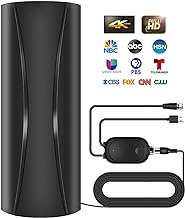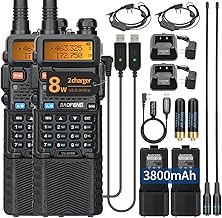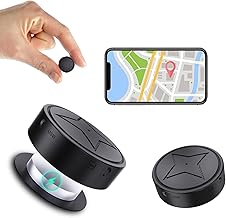5 important factors worth considering when looking for the best fm radio antenna
Choosing the right antenna can greatly improve your FM radio reception and overall performance. With so many options available, it is important to consider key factors before making a purchase. These factors include range, signal strength, antenna type, and installation requirements. By understanding these elements, you can make a decision that best fits your needs and preferences, enhancing your radio listening experience.
See our guide to the best fm radio antenna.
Type of antenna (external or internal)
When you’re deciding on an FM radio antenna, choosing between an external or internal one can make a big difference in how well you can listen to your favorite stations. People like external antennas because they can pick up a lot of different frequencies and have really good reception, which is helpful in areas where the signal is weak. But, installing an external antenna can be a hassle and might not be a good choice for people who care about how their space looks or who live in places where they can’t put anything outside.
On the other hand, internal antennas are a more discreet and easy option that blend in with your space without needing extra installation steps. They might not pick up as many frequencies as external antennas, but they work well for people in cities or anyone who wants a simple setup.
Deciding between an external or internal FM radio antenna is all about finding the right balance of practicality and performance. Think about what you need and what you like when you’re comparing the pros and cons of each type. Whether you care more about getting a strong signal or having your antenna look nice in your home, there’s an antenna that will work for you. By thinking about what you need and learning about both external and internal antennas, you can pick the best option for you and enjoy listening to your favorite FM stations even more.
Gain
When looking for an FM radio antenna, it’s important to think about something called gain. Gain helps improve how well your antenna picks up signals and how well it works. Choosing an antenna with higher gain can make your listening experience better, especially in areas with weak signal strength. A higher gain antenna can capture and boost radio signals better, so you get clearer sound and can pick up stations that are far away. While it might cost a little more, the better performance and reliability make it a good choice for people who love listening to the radio or live in remote areas.
It’s also important to think about the balance between gain and how easy the antenna is to install. High-gain antennas can pick up signals better, but they might be bigger and harder to set up than ones with lower gain. You need to think about what you need and what matters most to you to figure out the best gain level for your situation. By thinking about these things and understanding how gain affects antenna performance, you can make a smart choice that fits your listening habits and location.
Frequency range
When buying an FM radio antenna, it’s important to think about the range of frequencies it can pick up. This is key for getting clear radio signals. Choosing an antenna that covers a wide range of frequencies can make your listening experience better by letting you tune into more stations with better reception. A broader frequency range not only gives you access to more channels but also reduces interference, making your listening smoother and more enjoyable overall. By getting an FM radio antenna that supports a variety of frequencies, you can access a variety of music, news, and entertainment right at your fingertips.
In addition, a wider frequency range lets you explore different radio stations in different genres and regions. This gives you the freedom to discover new favorite stations and stay connected to the ones you already love. Whether you love music, news, or sports, having an antenna that can pick up a wide range of frequencies allows you to explore a lot of programming options that match your interests. Taking advantage of the flexibility provided by a wide frequency range can enhance your experience of listening to the radio and introduce you to a range of content that adds to your daily routine. Essentially, by focusing on the frequency range when choosing an FM radio antenna, you’re not just buying a piece of equipment, you’re opening up a world of audio possibilities that suit your unique tastes and preferences.
Durability
When you’re looking for an FM radio antenna to buy, it’s important to think about how long it will last. A strong antenna will not only stay working for a long time but also show that it’s well-made and dependable. Choosing an antenna made from tough materials like stainless steel or fiberglass will protect it from getting damaged, so it will keep working well for a while. By getting a durable antenna, you’re not just keeping your entertainment going, but also avoiding the headache of having to replace it often, which can interrupt your listening experience.
Durability is a crucial aspect that affects how well an FM radio antenna works and how long it will last. A sturdy antenna can handle tough weather like wind, rain, and snow, keeping a clear signal and good reception. When you’re looking at different antennas to buy, focus on ones known for being durable, as they’re more likely to keep working well without being affected by outside forces. Ultimately, choosing a durable FM radio antenna is a smart choice that ensures a stable and dependable source of entertainment, without the uncertainties that can come with lower-quality options.
Compatible with your radio model
When shopping for an FM radio antenna, it’s important to make sure it works with your radio so you get the best performance and reception. A compatible antenna can capture strong signals and make your listening experience better. You should think about things like frequency range, connector type, and antenna design to make sure the antenna will work well with your radio. Choosing the right antenna for your radio model will give you a strong connection and help avoid any signal problems, so you can enjoy clear and uninterrupted sound.
Getting a compatible FM radio antenna that fits your radio model can really improve how well your radio works. When you pick an antenna that meets your radio’s needs, you can make your radio work better and get the most out of it. Whether you listen to the radio occasionally or you’re a big fan, finding the right antenna for your radio model can help you get clear signals for a great listening experience. Making sure your FM radio antenna is compatible with your radio isn’t just a choice, it’s a smart decision to improve how well your radio performs.
Conclusion
In today’s world filled with high-tech gadgets and digital progress, the plain FM radio antenna is a symbol of how something simple can be dependable. Even though it may not look like much, the FM radio antenna is crucial for connecting listeners to their beloved radio stations, no matter the distance, and giving them clear sound. Its lasting existence shows us the value of keeping things simple and staying linked to the radio waves. As we move through the constantly changing world of communication, we should always remember the lasting impact of the FM radio antenna and how it enhances our everyday experiences. Want more info on package delivery box for porch, check the best package delivery box for porch.



